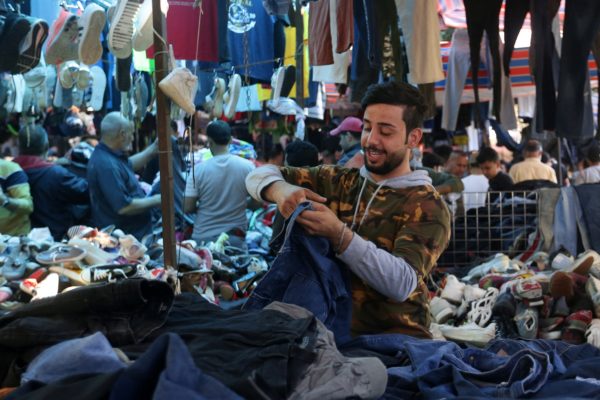Al-Hussainiya, Iraq – In a palm grove north of Baghdad, Iraqi shepherds looked on as models paraded second-hand garments down an improvised catwalk, seeking to raise awareness of the fashion industry’s environmental impact, as the models strut, pause and pivot on the runway.
But here haute couture has given way to outfits sourced entirely from second-hand clothes, a sign of the growing popularity of chic, environmentally-friendly vintage wear among young Iraqis. “We don’t want overproduction of clothes, we have to reuse them,” said Mohamed Qassem, 25, a hairdresser and organizer of the fashion show near Al-Hussainiya village.

The global fashion industry accounted for two percent of greenhouse gas emissions in 2019, according to the World Resources Institute. Campaigners and a growing number of climate-conscious social media influencers have led a push toward sustainable fashion. Many young people in climate-stressed Iraq have become passionate about vintage clothing.
The palm grove event showcased fluorescent green puffer jackets, long black leather coats, ample double-breasted blazers, and modern takes on traditional costumes. In many parts of Iraq, scarred by decades of conflict, peaceful rhythms are gradually returning to daily life and second-hand clothing offers aspiring fashionistas an affordable chance to express themselves.
Climate threats
The outfits at the Al-Hussainiya event predominantly feature green elements, a nod to the show’s environmental message. The United Nations says oil-rich Iraq is one of the five countries most exposed to the impacts of climate change, already witnessing extreme summer heat, frequent droughts, desertification and regular dust storms, which will exacerbate as the planet heats.

The designs at the fashion show will not be put on sale. Organizers mainly hope the symbolic parade will raise awareness. A student-turned-model for the day, Safaa Haidar, said she was attracted to vintage clothes as she could shop according to her personality.
But in Iraq, where the UN estimates nearly one-third of the 42 million inhabitants live in poverty, many wear used clothing out of necessity. In central Baghdad’s second-hand clothes market, stalls overflow every Friday with shirts, shoes and jeans, with shoppers checking sizes in front of the sellers.
Merchant Hassan Refaat, 22, sells imported second-hand clothes from Iraq’s northern autonomous Kurdistan region, bordering major textile producer Turkey. “Second-hand clothes are of better quality than the new clothes available on the market,” he said. “Very often, they are branded pieces, and the brands last a lifetime.”
Any reproduction of this content is prohibited.
Translated by Guilherme Miranda




